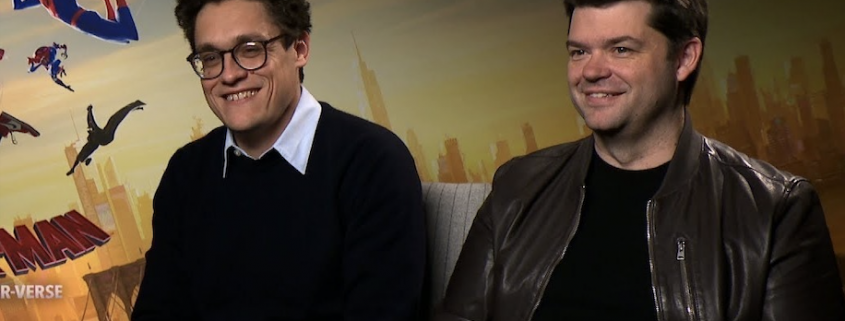‘Into the Spider-Verse’ creators detail film’s production

The Los Angeles Times screening of “Spider-man: Into the Spider-Verse” welcomed five key creatives to discuss the film’s production with Times subscribers Wednesday at The Montalbán. After the movie, Times senior writer Jeffrey Fleishman held a Q&A session with writer Phil Lord, producer Christopher Miller and directors Bob Persichetti, Peter Ramsey and Rodney Rothman in front of an audience of nearly 800.
Lord and Miller have operated as a filmmaking duo since their days as classmates at Dartmouth College. Some of their previous collaborations include “21 Jump Street,” “Cloudy with a Chance of Meatballs” and “The Lego Movie.” Ramsey made his feature-length directorial debut with the “Rise of the Guardians” in 2012. For Persichetti and Rothman, “Into the Spider-Verse” was their directorial debut.
Fleishman kicked off the conversation by asking Lord and Miller about the film’s beginnings. According to Lord, Sony executives approached the pair four years ago with a proposal to write and direct an animated Spider-Man movie.
The two had one request: The film would center around Miles Morales. Morales, an Afro-Latino teenager from New York, first appeared in the Ultimate Fallout series in 2011. The pair believed Morales would be fitting as an updated version of the relatable Peter Parker character that inspired them to make the film in the first place.
“The idea of a superhero who’s like us, who’s an ordinary person who does extraordinary things, is powerful,” Lord said. “Before him, superheroes were gods, billionaires, people who came down to save us. Peter Parker — he’s somebody who was just like us and had to learn to save himself and save others.”
Rothman said he wanted to make a superhero movie that was both organic and realistic. To do this, he made sure to focus on the many different relationships that shape Morales’ character, particularly his family and the various versions of Spider-Man from alternate universes.
“It was a just a series of encounters in his life that had different life experiences and represented a wide swatch of culture, race and sex,” Rothman said. “But really, it was just about trying to show through this diversity that we all have something in common.”
Rothman originally planned to include more friction and bickering between characters in the film, but in the midst of production, he found the film worked better with a friendlier dynamic.
“The movie works better when the characters kind of like each other,” he said. “Once we started to make the movie a little bit more open-hearted, then it just started to work better.”
To wrap up the conversation, Ramsey and Rothman stressed the importance of imperfection in screenwriting and filmmaking. They said that a good scene shouldn’t feel like the viewer is consuming a work of art; rather, they should feel like they’re witnessing an organic interaction between two people.
“Sometimes we don’t have to have the perfect line here if we can isolate the emotion,” Rothman said. “Sometimes people just don’t have the right words.”

